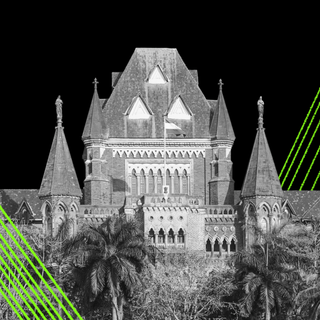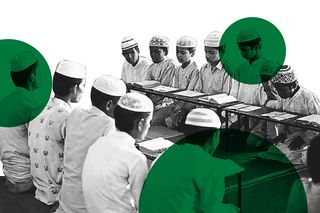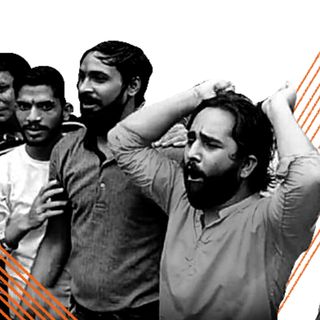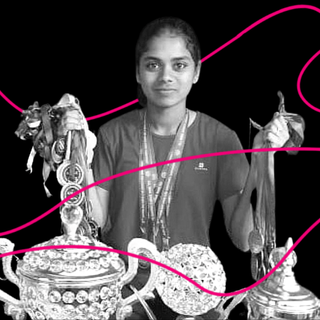
Only 8.7% Students in Minority Schools Are Actually From Minority Communities: Report
Minority schools are outside the purview of the RTE Act, thus facing no compulsion to admit students from disadvantaged backgrounds.

An incisive new report by India’s apex child rights body highlights that most minority institutions, like Vedic schools and unrecognized madrasas, are violating guidelines. More than four crore minority students, aged between 5 and 15, end up being excluded from formal education. So far, only 8.7%, a low percentage of students from minority communities in minority schools is due to many factors, from social to legal.
Minority institutions are essentially formed to include minority children and ensure they aren’t at a disadvantage. They are run by one of six religious minorities — Muslim, Christian, Buddhist, Sikh, Parsi, and Jain communities — and there are currently 18,000 minority schools in India.
“Since minority schools are outside the purview of the RTE Act, there is no compulsion to admit students from disadvantaged backgrounds,” the report shows, arguing that children in these institutions should be treated as out-of-school kids. Moreover, only 4.18% of students received benefits such as free uniforms, books, and scholarships.
This is because, in most minority institutions, 62.5% of students come from non-minority communities. For instance, Christian schools have 74.01% of non-Christians in their schools; in Sikh schools, a total of 75.50% of students are non-Sikhs.
These educational institutes are not included under the Right to Education Act (RTE) due to a tussle between constitutional amendments. Article 21A in the Constitution provides for the right to education to children between 6-14 years, Article 30 entitles minorities to establish and administer educational institutions.
In 2014, the Supreme Court upheld that the RTE Act doesn’t apply to minority educational institutions because “the Act should not interfere with the right of minorities to establish and administer institutions of their choice,” the Indian Express reported. This was in line with an amendment Article 15(5) introduced in 2006 that exempted minority schools from RTE – noting that it would create “a conflicting picture between the fundamental right of children and right of minority communities.”
But in its 116-page report, the National Commission for Protection of Child Rights (NCPCR) looked at data from the last five years to see how this exemption has played out in real life. The body stressed the minority institutions are not serving the purpose they are meant for — while enjoying the exemptions they get under the law.
Minority education institutes end up admitting only a certain class of students, excluding marginalized students from the system meant to uplift them. They end up becoming “cocoons populated by elites,” the report noted.
Related on The Swaddle:
Private Schools in Delhi Discriminate Against Muslim Children, Suggests Analysis of Admissions
At the same time, due to social stigma, the number of non-minority students in madrasas is the lowest. These minority schools are often underfunded and underkept, becoming “ghettos of underprivileged students languishing in backwardness.” Students from madrasas also face an incomplete range of education, feeling a sense of alienation and “inferiority” after leaving, the report noted.
But overall, due to inaccessibility and low upkeep, almost 1.1 crore Muslim children were out of school between 2015-16. The largest number of out-of-school children belonged to the Muslim community.
Reports in the past have noted Muslim students are at a disadvantage in private schools due to discrimination. Due to the cycle of exclusion, most Muslim children are likely to opt for government schools, minority schools, and madrasas.
“It is pertinent to note that Article 15(5) empowers the government to form any policy for the upliftment of socially backward class, thus forming the basis of affirmative action in private unaided schools in India. However, since it has been made inapplicable to minority schools along with the RTE Act (Article 21A), the study aimed to understand the impact of their exemption on the children,” the report said.
The NCPCR has submitted the report to the Ministry of Education with its recommendations. All schools, including madrasas, are recommended to be brought under Article 21A and the Sarva Shiksha Abhiyaan— the government’s flagship program aimed at universal access to education. “Based on several of the findings in the report, our view is that Article 21A should prevail over the latter for the benefit of children,” NCPCR’s Priyank Kanoongo told The New Indian Express.
Moreover, the government needs to map out all unrecognized institutions and identify the number of out-of-school children. During the pandemic, thousands of students from disadvantaged communities were pushed out of school due to the digital divide and economic strain on families. The exclusion from minority institutes threatens to exacerbate this number. State governments can also set a benchmark of the percentage of students from minority communities that must be admitted to a given institution, depending on the population and educational needs of the area.
Saumya Kalia is an Associate Editor at The Swaddle. Her journalism and writing explore issues of social justice, digital sub-cultures, media ecosystem, literature, and memory as they cut across socio-cultural periods. You can reach her at @Saumya_Kalia.
Related


What Delhi’s Anti‑Muslim Chants Can Teach Us About ‘Ethnic Outbidding’
